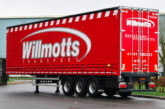
Ayse Celebi, Product Marketing Specialist for Astrata, explores how digitalisation will shape the next generation telematics solutions, and how telematics solutions will fit the future needs of the supply chain.
Data collection and data sharing are the basis of telematics and logistics software. But gathering and processing data can be a complicated process, particularly if the data needs to be extracted from third party data sources. Besides, any data that is being collated is only valuable if it can be presented in a meaningful way that enables companies to make better decisions and add value to their business.
Many transport and logistics companies are dealing with an abundance of unstructured data, struggling to extract useful information and make sense of it. That’s because they often use a variety of systems, hardware, and sensors, and work with subcontractors who use different systems. This complexity limits their operational capabilities, resulting in lost time, low productivity, poor decision-making, inefficiencies, and lost revenues. It also means that fleet managers have no insight into the performance of their whole fleet.
Plus, monitoring different data sources through multiple interfaces is time-consuming and results in reduced productivity due to mental and physical fatigue, leading to human errors. This could give rise to hazardous situations on the road, negatively affecting the conditions of the assets on the move, leading to miscommunication and violations. As a result, this could lead to increased operational costs.
These challenges are an open invitation to bring fragmented solutions into an integrated platform approach and they present an opportunity for companies to drive forward their digitisation agenda. Pervasive links are needed between these fragmented solutions, as well as a new business model to represent these solutions in a unifying and converging approach. This is where open telematics comes to the fore – a platform that integrates different data sources in a single platform and offers various services to the customer.
Open telematics adds value to customers’ core business by integrating different data sources in a single platform and offering various services for the customer. It utilises data generated by various third party devices and sensors in and around the vehicle to provide information to fleet managers regarding vehicle, trailer, and driver in a single platform.
What are the benefits?
The benefits are numerous. Seamlessly integrating all systems into one platform enables fleet managers to see all their fleet-wide information and insight to their business in one place. Having complete visibility of all movements reduces fleet managers’ workload, improves productivity, decreases the chances of human error, increases profitability, and improves business results through greater reliability and customer satisfaction. Value is added to companies’ core business by making vehicles a part of the Internet of Things (IoT), including the cloud, infrastructure, and smart phones.
Transport companies use telematics to get information from and about their vehicles and drivers, enabling them to reduce costs and utilise their fleets at full capacity. Their challenge is to manage every action and event on a different interface while dealing with a heavy workload. Open telematics can offer them an environment where they can see everything in one place no matter which system(s) or existing solutions they have been using. The right software will integrate with any system without downtime for the fleet or existing back-office solutions, so vehicles and operations can keep on running.
Open telematics helps to achieve comprehensive visibility by implementing effective collaboration as a driver for competitiveness, on-time performance, and profitability. With its standardised data, open telematics creates a social value, which is one of its most powerful qualities, by increasing the connectivity between third party providers, drivers, and back offices, and bringing transport, logistics, and shippers together.
It also has an environmental and social impact at a global level: by using available data from any device, companies reduce their ecological footprint. This helps to use the existing digitised data and design a smart and greener business for the entire supply chain. Perhaps the future is not only digitised, but also greener.








